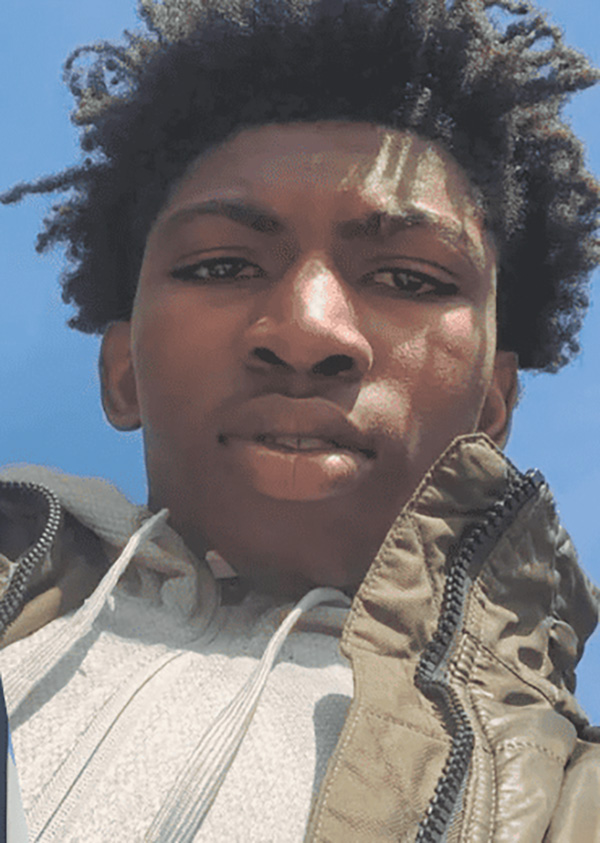Black Community Opinions
New Report Shows Excessive Police Force Is Not Uncommon
Recent incidents in Norfolk and Chicago, along with a new Associated Press report, shed light on the persistent issue of excessive force in law enforcement encounters nationwide, particularly impacting Black Americans.
#ExcessiveForce, #PoliceShooting, #RacialDisparities, #AssociatedPress, #Norfolk, #Chicago

By Rosaland Tyler
Associate Editor
New Journal and Guide
“We just want answers,” said Marcus Jones to WTKR-TV. “We just want to know what happened and why,” said Jones, about his deceased uncle Santonio P. Lee.
Norfolk police officers were attempting to serve Lee with a warrant for a March 8 shooting in Norfolk when he led them on a chase down Terminal Boulevard, according to news reports. The car Lee was driving crashed into a ditch. Police said Lee opened fire on officers, and they returned fire – fatally striking Lee, according to an April 18 WTKR-TV report.
Relatives noticed bullet holes in the trunk, the headrest and the back windshield after the shooting. Relatives said officers never came to the home, to serve a warrant prior to the police chase. Norfolk Police said body-worn camera video of the incident does not exist. Evidence has been turned over to Virginia State Police to conduct an independent investigation – and that could take several weeks to complete before it is turned over to Norfolk Commonwealth’s Attorney Ramin Fatehi. Officers are on administrative leave.
A recent Associated Press report shows police officers are still using excessive force in encounters all over the USA, including the recent encounter in Norfolk.
Several days after Lee was killed by Norfolk police officers in early March 2024, Chicago police officers fired as many as 96 shots at Dexter Reed, age 26, in a residential neighborhood during a routine traffic stop over an unfastened seat belt, on March 21. Ninety six shots or more were fired at Reed, during a 41-second span. One officer fired at least 50 times – including after Reed was lying on the ground, Chicago’s Civilian Office of Police Accountability said, in recent news reports.
“And after he was already on the ground there, they still put him in cuffs instead of checking to see if he’s breathing. They shot (at) him 96 times and reload(ed) the clip three times,” Reed’s sister Porscha Banks said at a recent press conference in Chicago.
A recent Chicago Tribune report said, “Reed repeatedly sought legal remedies for his financial, medical and psychological struggles after he was wounded in another shooting in August 2021.”
Court records show Reed wrote in an August 2023 court filing, “I’m physically disabled and mentally unstable with PTSD, short-term memory loss, slurred speech, drop foot in one of my legs, blindness in one eye, shoulder/arm hard to move, weakness and/or sensitivity. With all these medical conditions it has been hard for me to work and/or do certain things.”
County court records show that Reed filed lawsuits between March and August last year, acting as his own attorney in both legal complaints. Three of those lawsuits – filed against the city’s Finance Department, a former college basketball teammate and Reed’s former employer, Monterrey Security – were filed in March 2023.
The point is both of these recent police shootings in Norfolk and Chicago are consistent with findings in the Associated Press’ new report. It said medical officials cited law enforcement as causing or contributing to about half of the excessive force deaths. The new report on excessive force was compiled by The Associated Press, Howard Center for Investigative Journalism programs at the University of Maryland and Arizona State University, and FRONTLINE (PBS).
Often, significant police force went unmentioned and drugs or preexisting health problems were blamed instead in many deaths including George Floyd’s May 2020 death, researchers noted.
Researchers could not point to a specific excessive-force site. Deadly encounters happened just about everywhere: big cities, suburbs, and rural America. Red states and blue states, researchers noted. Restaurants, assisted-living centers, and – most commonly – in or near the homes of those who died.
The Associated Press explained on its website, “The deceased came from all walks of life – a poet, a nurse, a saxophone player in a mariachi band, a truck driver, a sales director, a rodeo clown and even a few off-duty law enforcement officers. All but 3 ;percent of the dead were men. Most tended to be in their 30s and 40s. The youngest was just 15, the oldest 95.”
AP continued, “The toll, however, disproportionately fell on Black Americans. They made up a third of those who died despite representing only 12 percent of the U.S. population. Others feeling the brunt were those impaired by a medical, mental health or drug emergency, a group particularly susceptible to force even when lightly applied.”
“About 25 percent of those who died were threatening no one or, at most, committing minor infractions, AP’s review of cases shows. The rest involved other non-violent situations with people who police said were trying to resist arrest or flee.”